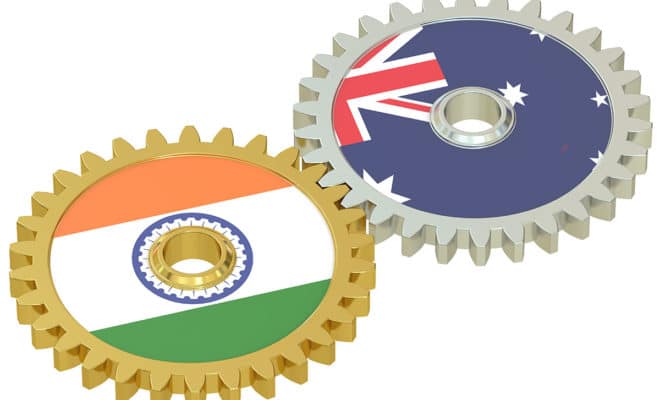Business
India And Australia Move To Tighten Bonds To Counter China’s Rise

Photo: Bigstock
Morrison emphasized shared values between Australia and India, drawing an implicit contrast with China’s authoritarian approac
India’s president, Ram Nath Kovind, on Friday began wrapping up his visit to Australia after several days of meetings as the two countries move to tighten their economic and political bonds at a time of worsening tensions between China and the United States.
The visit came four months after the quiet release of a 500-page report by Australia’s former top diplomat, Peter Varghese, on the need to enhance the country’s economic and security ties with India over the coming years.
Australia’s prime minister, Scott Morrison, endorsed that report Thursday, calling it “a road map for our economic future with India.” He and other officials said the Australian government had agreed to work on strengthening ties between the two countries’ education, resources, agribusiness and tourism sectors.
“The relationship is on an upward trajectory, and this visit is likely to give it positive momentum,” said Ajay Gondane, India’s high commissioner to Australia.
Although the leaders’ conversation focused on economic partnerships, their meeting and the Varghese report have pointed to growing concerns in both countries about China’s aggressive rise, experts said, and the efforts needed to counter it.
“The report did not specifically say that India and Australia need to work together to balance China — it was much more sophisticated and nuanced,” said Amitabh Mattoo, a professor at the University of Melbourne and the founding director of the university’s Australia India Institute. “But anyone who reads between the lines would recognize that it’s China, China and China.”
Morrison emphasized shared values between Australia and India, drawing an implicit contrast with China’s authoritarian approach.
“Our cultures might be different, but we believe in similar things — we believe in the supremacy of the ballot box in our national life; in the rule of law,” Morrison said at the India Business Summit in Sydney on Thursday. “And we believe in the rights of nations to live free and not under the controlling hand of others.”
Kovind echoed that point, speaking of “the peace and prosperity of a free, open and rules-based Indo-Pacific Region,” as well as “a shared passion for cricket.”
After unveiling a statue of Mohandas K. Gandhi and addressing members of the Indian diaspora in Sydney, Kovind spoke to students at the University of Melbourne before heading to a cricket game between India and Australia.
The visit came as the two countries have become increasingly interwoven through trade and immigration.
Two-way trade between Australia and India hit $27.5 billion last year; 700,000 people of Indian descent call Australia home, making it the fastest growing immigrant community in Australia; and more than 87,000 Indian students are enrolled at Australian educational institutions, Morrison said in his speech Thursday. He added that “we welcome more skilled migrants from India than any other nation.”
India has also been a major investor in Australia’s mining industry. Morrison said that coal was Australia’s largest export to India, worth more than $9 billion in 2017.
But one of those investments has drawn intense scrutiny: the effort by the Indian company Adani to open one of the world’s largest coal mines, which opponents say would harm the Great Barrier Reef because of potential damage from coal shipments. The plan still awaits final approval.
But this week, the focus has been on strengthening economic ties and broadening the two countries’ strategic alignment.
The talks came a year and a half after Malcolm Turnbull, Morrison’s predecessor, met the Indian prime minister, Narendra Modi, during a visit to India. At the time, Turnbull put a proposed free-trade agreement between the two countries on the back burner. But now there is a greater sense of urgency to build ties in order to counter China, Mattoo said.
“The economic relationship will happen in any case,” he said. “It is the strategic alignment that is important to ensure that the relationship really takes off.”
c.2018 New York Times News Service
